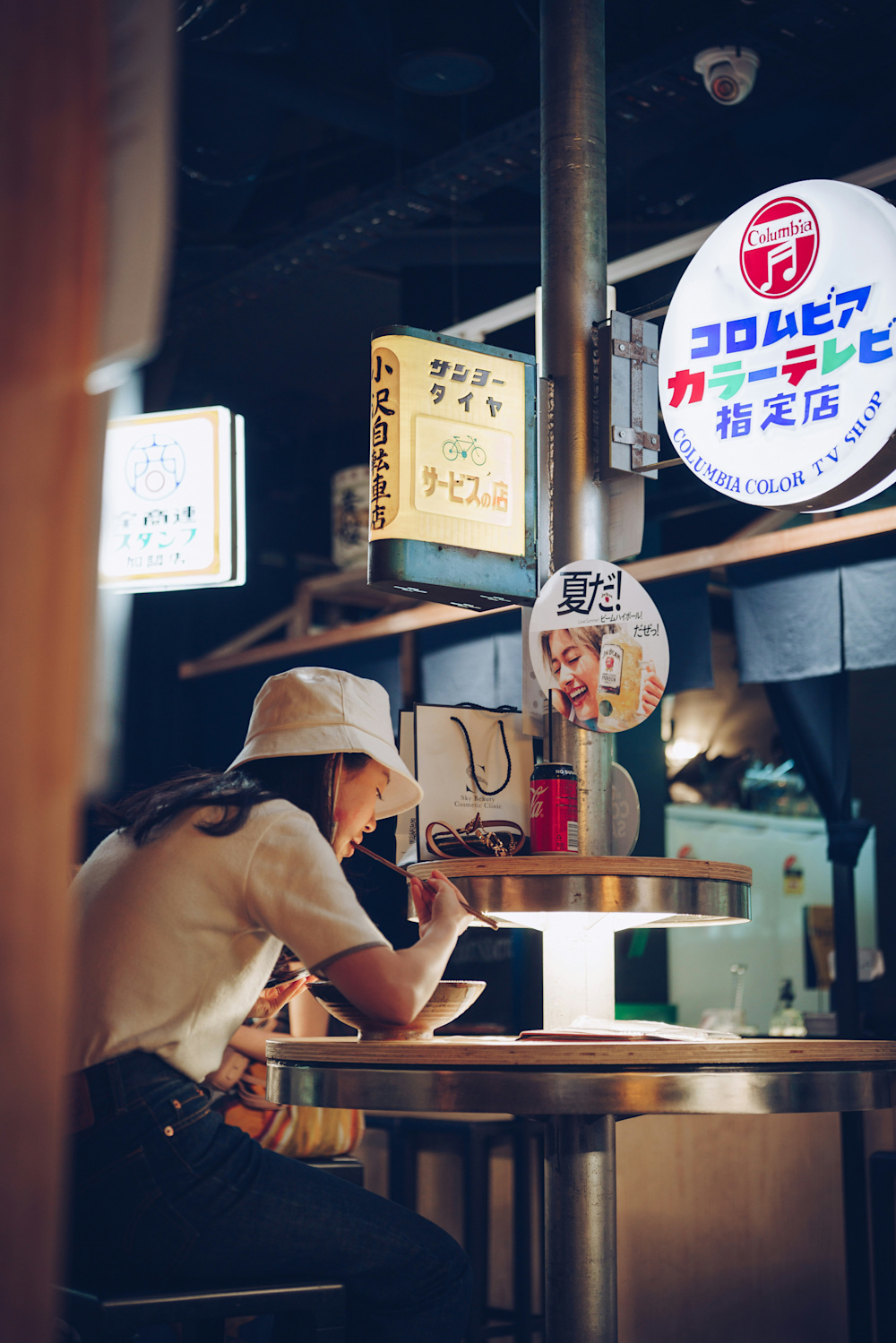Updated October 3, 2025
How to Live in Japan Without Fluent Japanese: What To Know
I moved to Japan in April 2022 without knowing much Japanese. After attending a language school for about six months and another three months of job searching, I landed my first job in Japan entirely in English.
Even after switching jobs, English is still the main language I work in.
So, how is my Japanese?
It’s okay. Definitely not fluent whatsoever. It’s…. Okay.
Despite that, I’ve been living here quite comfortably, and I want to share tips and advice on how to live in Japan without being fluent in Japanese.
In this article: 📝
Moving to Japan without Japanese
Moving to Japan without knowing Japanese will look different for everyone. In my case, I came to Japan to attend a language school, which made the process easier.
Many language schools, including mine, will help with:
Visa processing: They handled most of the visa paperwork to help me obtain the Certificate of Eligibility (COE) for my student visa.
Housing: The school offered dormitory options, which I applied for. But others were allowed to find a separate apartment.
Airport pick-up: For an additional fee, they arranged for someone to pick me up at the airport to take me to the dorm.
Other common ways people move to Japan are with a job transfer or on a working visa. Each has its pros and cons, especially if you’re handling the paperwork yourself or getting support from your employer or program.
Setting up daily life without Japanese

I was pretty lucky that my first time living in Japan was supported by my language school and dormitory. It made the transition easier.
For housing, the dormitory was furnished, so I didn’t have to worry about a bed or desk. Utilities were paid every three months through the school, which kept things simple. Since I moved with just two suitcases, it was a huge relief to have this form as a starting point.
One of the dormitory staff spoke some English, which was a relief when I had questions or needed help getting settled.
The hardest part of setting up my life in Japan without Japanese was opening a Japanese bank account. Luckily, the language school helped students set up one. As an American, I had to fill out some extra paperwork because of tax reasons, so I was grateful to have someone to help me through the process.
Out and about: buying things, going to restaurants, and more
Living in Japan without being fluent in Japanese can be intimidating at first, but day-to-day activities can be surprisingly manageable, especially when you’re living in the city.
Here’s how I handle shopping, transportation, eating out, and more with minimal Japanese.
Buying things
Many Japanese products have English labels underneath. Even if there isn’t a translation, many items are easily recognizable by looking at the packaging, like paper towels, shampoo, and snacks.
When I’m not sure what something is, I’ll use Google Translate’s camera to translate the text.
When checking out, many stores have self-checkout kiosks where you can switch the language and scan your own items. Then you can select a payment option, usually cashless, like using a credit card, transportation card, point card, etc.
Using public transportation
Japan’s public transportation system is incredibly foreigner-friendly, especially in the city. The station’s name, entrances/exits, route and transfer info are usually in Japanese, English, Korean, and Chinese.
And navigating to where you need to go is accessible with any navigation app, like Google Maps or NAVITIME.
Ticket machines at stations also let you change the language. While you can use an IC Suica or Pasmo card, you can download the app and handle everything on your phone.
The real challenge? Crowds, especially during rush hours, can be overwhelming if you’re not used to them.
Eating out

Eating out without Japanese is totally doable. Many restaurants in cities have plastic food displays outside to see what the dishes look like. Their menus include pictures and English translations.
Some restaurants will have an ordering tablet, allowing you to change the language and order food without talking to the staff.
But if there’s no English, you can order your meal by pointing to the item and holding up fingers to show how many you want.
And modern or chain restaurants have ordering kiosks where many of them allow you to change the language. But their payment options are usually cashless.
Solo outings
Many of my hobbies in Japan are solo outing trips. Anytime I go out into the city, I look at English signage and guides. Many museums, cultural sites, and public gardens have English-speaking staff, which makes it really nice to enjoy them.
For movies, many theaters show international films (though usually a bit later than their original release). Ticket machines will allow you to buy tickets by switching languages. If not, showing the staff the movie poster will do the trick.
If I’m going to an event that requires a prepaid ticket, buying it online with a translation extension helps a lot.
For shopping, I will use Google Translate for any labels. And I often use self-checkout when possible. If not, you can say, “kado” for credit card or hand over cash, and the staff will handle the rest. Though if you’re in the city, the staff will know some English.
Going to the doctor or pharmacy
While it can be difficult to find English-speaking clinics, it is possible. Many cities offer a multilingual medical interpretation service via a phone number. So you can call that number at any Japanese hospital for medical care. Of course, using a translation app to explain symptoms also works.
For any prescribed medicine, bring your doctor’s slip to any pharmacy. The pharmacists will include the dosage instructions, so translate that to know how to take your medicine.
For over-the-counter medicine, Google Translate’s camera feature can translate the type of medicine, the symptoms it will alleviate, and the dosage. It’s great when looking for cold medicine, allergy relief, or even eyedrops.
Getting a haircut
Getting a haircut without Japanese can be stressful, and it still is for me.
What really helps is finding an image of the haircut you want and using phrases like:
Kore onegai shimasu: This please
Mijikaku kudasai: Short please
Sukoshi: A little
Of course, a translation app is always helpful for anything more complex.
Some salons in a Japanese city will cater to foreigners and have English-speaking staff. But a little bit of prep goes a long way.
Working in Japan

All the jobs I’ve had in Japan, so far, haven’t required me to speak Japanese. I consider myself extremely lucky to be able to work entirely in English.
But does that mean you can work in Japan without speaking Japanese?
It depends on your industry.
For example, many tech industry companies, especially those hiring for software development, engineering, or design roles, don’t require Japanese. These types of jobs prioritize technical skills (like coding or design experience) over language ability.
Other common jobs that may not require Japanese include:
English teaching (ALT, Eikaiwa, private lessons)
Customer support for global companies
Hospitality roles in tourist-heavy areas (some hotels, hostels, etc.)
Recruitment agencies focused on global talent
That said, knowing Japanese will open more opportunities, promotions, and a smoother work-life experience.
Helpful apps and resources
There are many apps to help you live in Japan, but here is what I found to be useful for me:
Google Translate: especially their camera feature to translate signs, labels, menus, and more.
Google Maps: great for navigating Japan’s complex train systems, buses, or even finding restaurants, clinics, or convenience stores nearby.
LINE: the most commonly used messaging app in Japan
NERV Disaster Prevention App: real-time updates in English about earthquakes, tsunamis, and other natural disasters. A must-have for earthquake and disaster prep.
Imiwa?: an offline Japanese-English dictionary app
Basic Japanese knowledge
If you're planning to live in Japan, even without fluency, learning some basic Japanese is highly recommended. It will make everyday life smoother and give some respect to the country you are living in.
Here are some essential Japanese basics worth learning:
-
Greetings:
Konnichiwa: Hello / Good afternoon
Ohayou gozaimasu: Good morning
Konbanwa: Good evening
Arigatou gozaimasu: Thank you
Sumimasen: Excuse me / I'm sorry
Hai / iie: Yes / No
-
Basic counting:
Ichi: 1
Ni: 2
San: 3
-
Location words:
Toire: Toilet
Eki: Station
Byouin: Hospital
Yuubinkyoku: Post office
Konbini: Convenience store
Migi / hidari: Right / Left
Koko / soko / asoko: Here / There / Over there
Overcoming the language barrier without fluent Japanese
Living in Japan without any fluency means you’ll encounter many language barriers. Whether you're visiting a government office, going to the doctor, or simply asking for directions, communication can be an issue.
But there are many workarounds:
Translation app: typing what you are trying to say or quickly translating a document or image.
Asking for help: from a Japanese friend or coworker. Many times, your employer or school might be able to help.
Government translation service: like the medical translation service at hospitals
Take Japanese lessons: to help build confidence in speaking Japanese. For local community lessons or online tutors.
-
Knowing key phrases:
Nihongo ga wakarimasen: I don’t know Japanese
Eigo daijoubu desu ka?: Is English okay?
In closing
While people do speak English in Japan, it is still possible to live here comfortably without being fluent in Japanese, especially if you’re in the city.
With the right tools, a bit of prep work, and a willingness to learn the basics, you can navigate daily life, work, and enjoy your time in Japan.
Get Job Alerts
Sign up for our newsletter to get hand-picked tech jobs in Japan – straight to your inbox.








